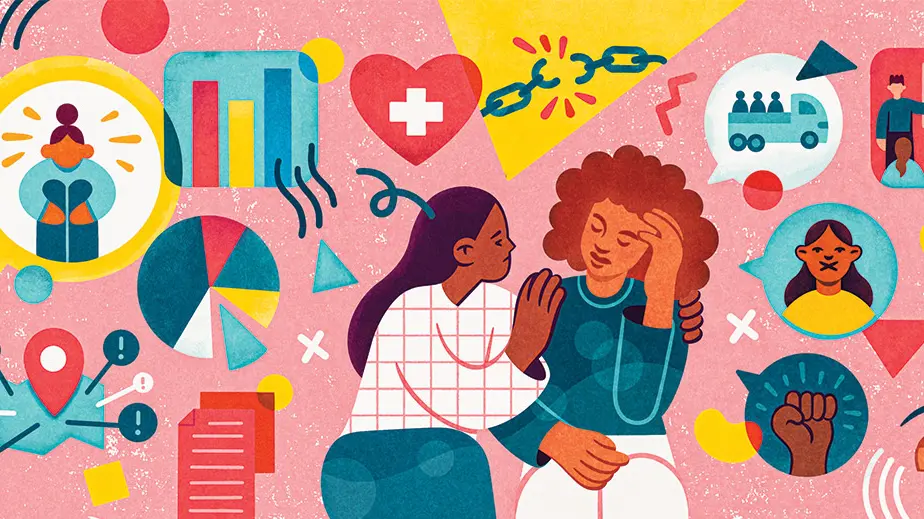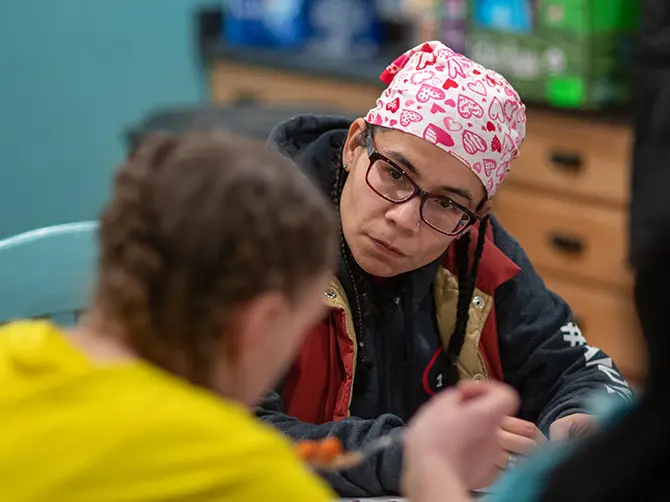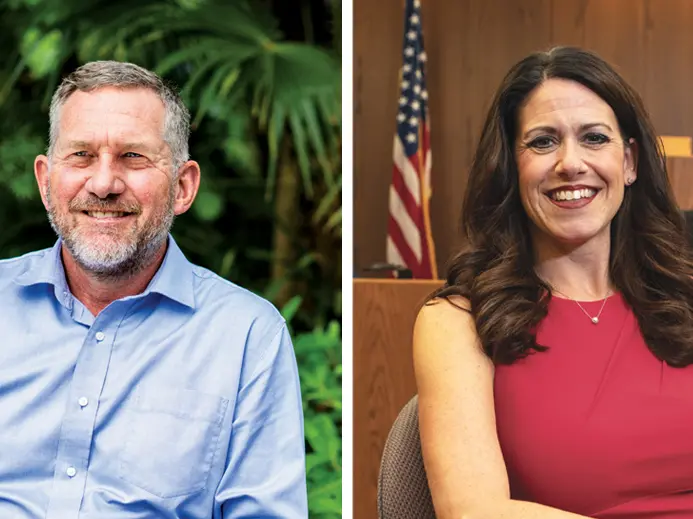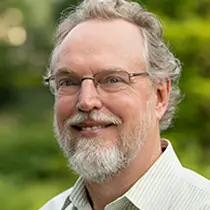How are Buckeyes fighting human trafficking?
To confront a complicated problem like human trafficking, it takes a community, and as Buckeyes, we’re invested.

(Illustration by Chanelle Nibbelink)
Professors, researchers, medical professionals and students across Ohio State address human trafficking’s layers of complications by taking them down to the individual level — one nuance, one project, one victim at a time.
“Each person can do their part to be able to reduce demand and end human trafficking,” says Ashley
Crum ’15 MA, a counselor who has worked with survivors through Talbot Hall Addiction Services at Ohio State.
In one effort, Moritz College of Law partnered with Franklin County Juvenile Court to create a program empowering youth who are possible trafficking victims.
“This is to provide kids who have been victimized with services and support, rather than criminalization and punishment,” says Kim Jordan, director of Moritz’s Justice for Children Project.
Here are five more ways Buckeyes confront trafficking.
Recognizing victims
Ashley Wilson ’01, ’09 MS and Candace Miller ’05, endoscopy nurses at The Ohio State University Wexner Medical Center, shared an epiphany at a 2015 Columbus police presentation about signs of human trafficking.
“We were like, ‘Oh my gosh, that patient we had was probably being trafficked,’” Miller says.
So the pair organized and conducted training to show fellow staff members working in registration, security and the emergency department how to recognize trafficking victims. That’s important because they can’t be offered help if their plight goes unnoticed.
“Human trafficking is a huge issue,” Miller says, “but there are tons of ways people can directly or indirectly help the victims at different points of their journey.”
Learning globally
Sharvari Karandikar, associate professor in the College of Social Work, listens to and looks in the eyes of women involved in the sex trade, conducting research that exemplifies Ohio State’s global reach.
She’s been taking students to her home country of India almost annually since 2009 to engage in project interviews. Their study on how Mumbai sex workers exercise agency won the 2021 Feminist Manuscript Award from the Council of Social Work Education.
Karandikar’s current project — how COVID-19 and lockdowns affect women and children living in Mumbai brothels — is finding that traffickers are more often using technology as a means of coercion.
“Before, we thought human trafficking was somebody else’s problem,” says Karandikar, who teaches an Ohio State class on the subject. “We grappled with understanding that this happens in Ohio. We’ve since been able to learn and come up with better solutions.”
Inspiring the future
Arts combine with action in the student organization Unchained at Ohio State, which finds creative ways to spread awareness about trafficking.
The Unchained Fashion Show, held this year in early March, tells the story of a trafficking survivor through three stages: innocence, violation and restoration.
“The intersection of the arts and this really important issue is appealing to a lot of people,” says junior Shiva Induri, president of the 25-member group.
Since 2016, proceeds from the event have gone to a college scholarship for survivors.
“The students and the youth are the future,” Induri says. “As citizens, it’s our duty to help in any way we can.”





